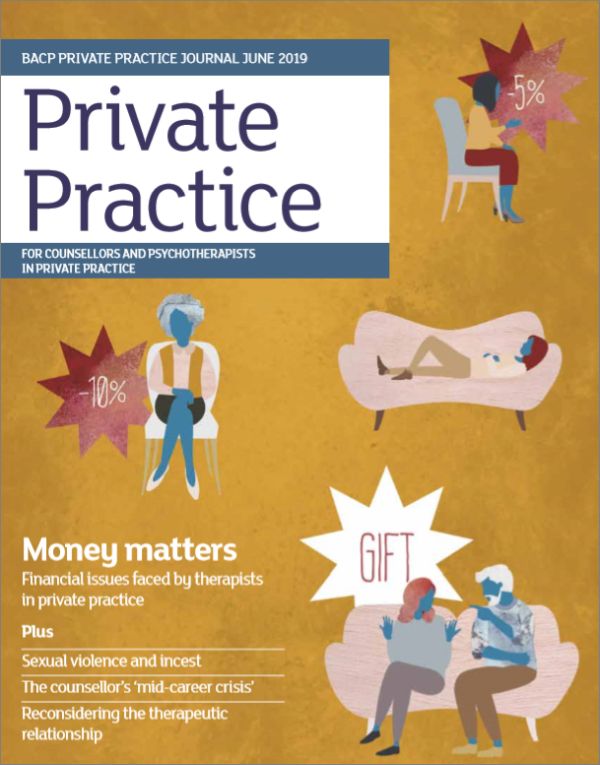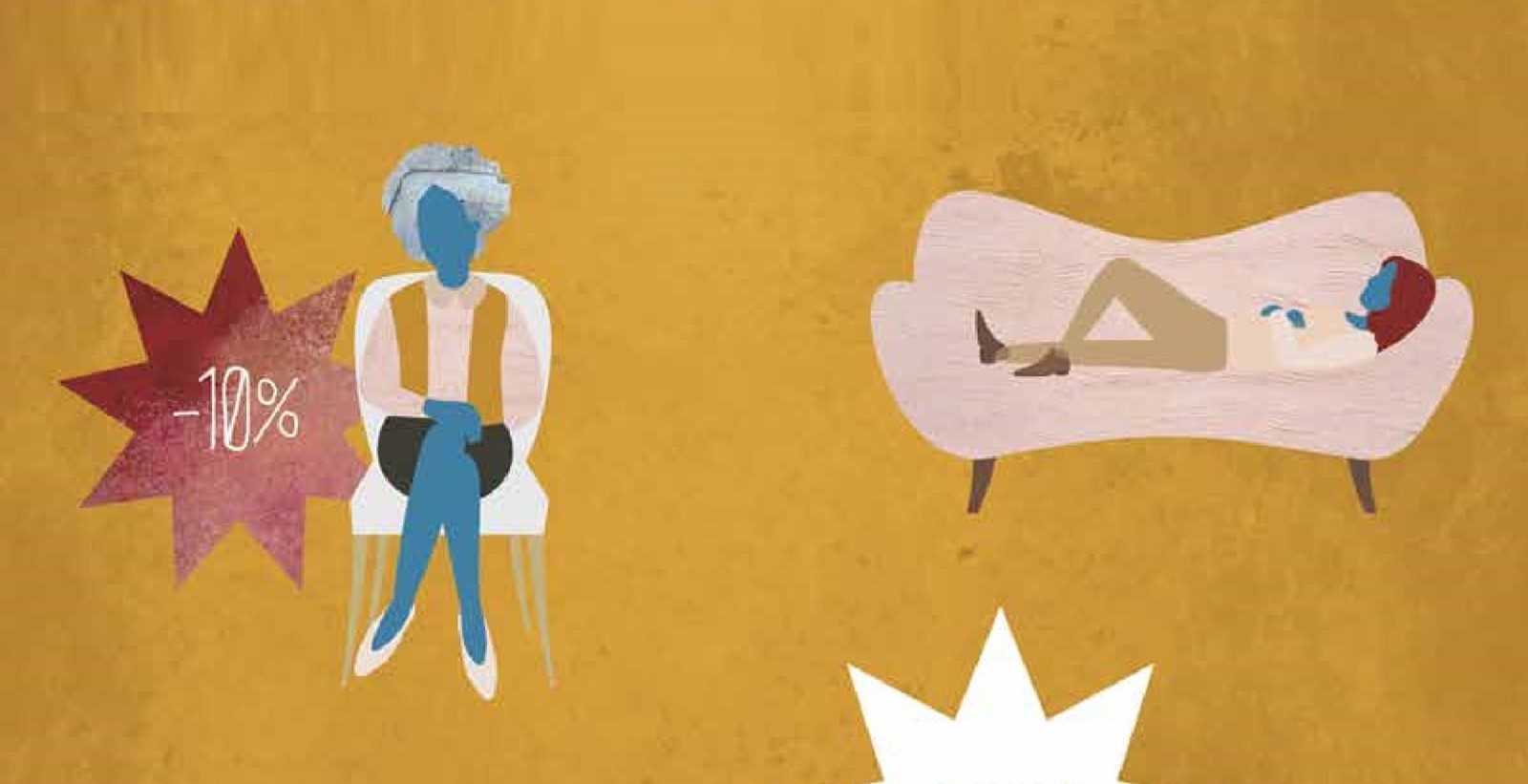In this issue
Features
Money matters (free article)
James Rye on financial issues faced by therapists in private practice
Three-legged stool
Emma Redfern reconsiders the function of the therapeutic relationship
Wake-up call (free article)
Wyn Bramley on the counsellor’s ‘mid-career crisis’
From taboo to empowerment
Rebecca Mitchell on sexual violence and incest
Regulars
From the chair
Lesley Ludlow: New perspectives
Imperfect therapist
Lizzie Thompson: Toeing the line
My practice
Sarah Van Gogh: Joy and shadow
Supervision
Jim Holloway: Shadow signs
Relationships
Alex Sanderson-Shortt: Safe uncertainty

A pdf of this issue is available in the Private Practice archive
From the editor
‘A soul connection is a resonance between two people... a sacred alliance whose purpose is to help both partners discover and realise their deepest potentials. While a heart connection lets us appreciate those we love just as they are, a soul connection opens up a further dimension – seeing and loving them for who they could be, and for who we could become under their influence.’1
The above quote from psychotherapist, teacher and author John Welwood (who sadly died on January 17, 2019 at the age of 75) comes to mind when I reflect on some of the themes in this issue. It speaks to the transformational power of intimate relationships, for both people involved, which Emma Redfern touches on in her article. She imagines the therapeutic relationship as a three-legged stool, with one leg representing the client/therapist relationship, one the inner system of each person, and one the interventions the therapist uses.
‘Successful therapy is not a one-way street with the therapist doing all the providing, intervening and relating,’ Emma writes. Rather, it is an intersubjective, co-created dance of back and forth exchanges, as both people in the room provide present-moment, conscious and unconscious, feedback to each other. She cites Scott Miller, who suggests that an over-emphasis on maintaining boundaries, not becoming over-involved and discouraging dependence, are detrimental to the therapeutic relationship.
Working relationally, however, as Emma says, might not be for everyone, as it requires a willingness to give up control (particularly of any need to fix the other); to equalise (as far as that’s possible) the power dynamic in the relationship, by accepting that, in relation to their inner world, the client is the expert in the room; and to shift away from thinking of the therapist as healer, to the reality that clients have healing within themselves.
The natural conclusion of this line of thinking is that the only person we can ever truly come to know is ourselves, and that it is only through becoming more enlightened about ourselves that we can hope to guide our clients in their journey of self-understanding. Wyn Bramley picks up on this thread in her article about the counsellor’s ‘mid-career crisis’: a time when big questions need to be asked, and dealt with, if clinical performance, personal fulfilment, and our own mental health are not to be put at risk.
Instead of turning to the outside world for sustenance, Wyn argues that the route through this crisis is to deepen the use of what is inside us for the benefit of our clients. Echoing Miller, she writes that clients need to know who they are talking to, and that the ‘neutral, so-called “professional attitude” can seriously restrict the growth of a mutually transparent, reality-based relationship that enables the client to trust and confide’. She identifies five stereotypical stances that she argues we unconsciously manufacture to put ourselves, not the client, at ease. Perhaps you might recognise aspects of one or more of these defensive strategies in your practice? I know I do.
Given that the essence of effective therapy, regardless of modality, is the ability of the counsellor and client to mutually engage together, in our cover article, James Rye focuses on the dilemmas we have to grapple with as therapists in private practice, juggling the competing needs of providing safe and effective clinical care with running a business that, for most of us at least, will need to be profitable.
Inspired by an episode of the BBC comedy, Fleabag, James discusses the pros and cons of operating voucher systems to attract business, or discounted rates as incentives to clients. The risk, he writes, is that we might send a message to the client that they are special in some way, which can change the power balance, including the possibility they might think we are doing them a favour.
Another possibility is that we are unconsciously communicating a lack of value in ourselves and what we do. James writes: ‘I’ve spent many hours with many clients who have had similar messages about themselves and have worked with them to resist such scripts. Thankfully, I’m now more confident in resisting giving off such messages about myself… I’ve learned to be proud of my years of training and of professional experience, and I feel that I charge a reasonable fee for what I do.’
In the fourth of the articles in this issue, Rebecca Mitchell continues the theme of the importance of dropping the neutral ‘professional stance’, at least within our own ranks, by writing about her experience of childhood sexual abuse. Worryingly, when she has dropped her guard with other counsellors about this, she has not always been met empathically. ‘What I fear the most with other mental health professionals is being seen as somehow less than, or even perhaps unable to do my job, if they know that I have lived through incest,’ Rebecca writes. Despite this, she is resolved not to stay silent, and encourages other practitioners who have experienced sexual abuse to join her in her mission to bust the taboo.
John Daniel, Editor
privatepractice.editorial@bacp.co.uk
Reference
1. Welwood J. Love and awakening: discovering the sacred path of intimate relationship. New York, NY: Harper Perennial; 1997.
